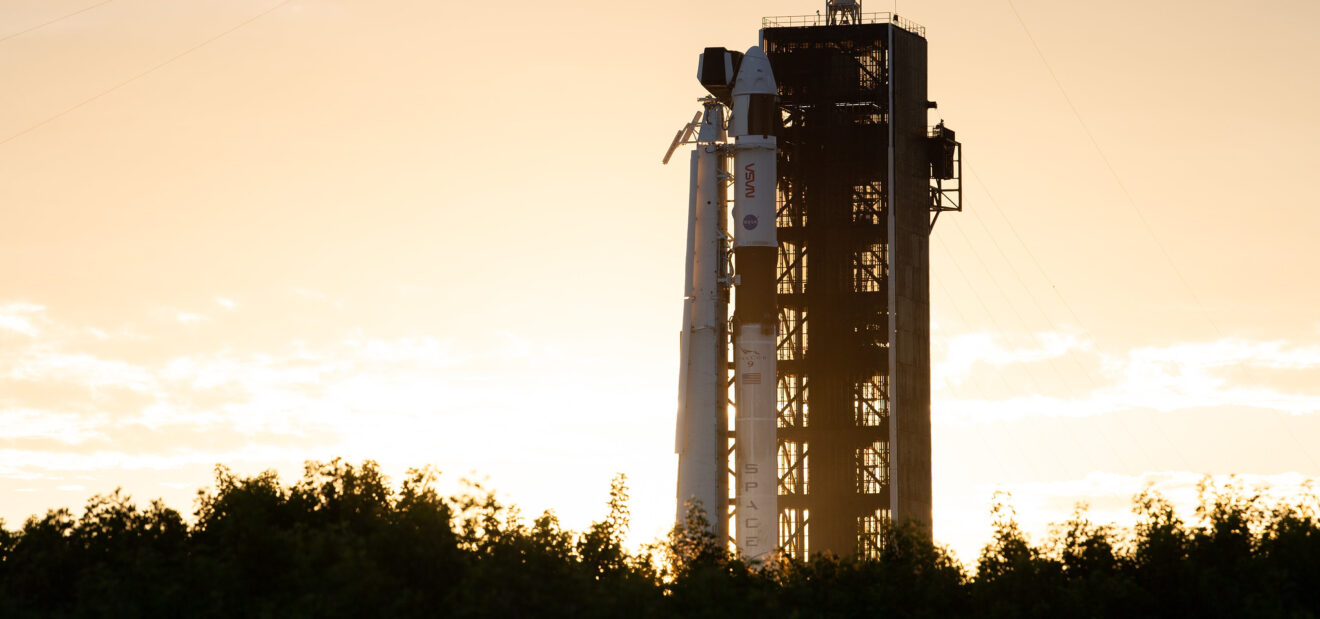Coverage Update for NASA’s SpaceX Crew-3 Briefings, Events, Broadcasts


NASA is updating its coverage of the upcoming launch and docking activities for the agency’s SpaceX Crew-3 mission with astronauts to the International Space Station. This is the third crew rotation mission with astronauts on the SpaceX Crew Dragon spacecraft and the fourth flight with astronauts, including the Demo-2 test flight, as part of the agency’s Commercial Crew Program.
The launch now is targeted for 1:10 a.m. EDT Wednesday, Nov. 3, on a SpaceX Falcon 9 rocket from Launch Complex 39A at NASA’s Kennedy Space Center in Florida, due to unfavorable weather conditions forecast along the flight path for the Sunday, Oct. 31, launch attempt.
Weather conditions along the ascent corridor are expected to improve for a Wednesday, Nov. 3, launch, and the 45th Weather Squadron forecast predicts an 80% chance of favorable weather conditions at the launch site.
NASA’s SpaceX Crew-3 astronauts will remain at crew quarters at Kennedy until their launch. They will spend time with their families and receive technical and weather briefings in the next few days.
The Crew Dragon Endurance is scheduled to dock to the space station at 11 p.m. Wednesday, Nov. 3. Launch and docking coverage will air live on NASA Television, the NASA app, and the agency’s website.
The Crew-3 flight will carry NASA astronauts Raja Chari, mission commander; Tom Marshburn, pilot; and Kayla Barron, mission specialist; as well as ESA (European Space Agency) astronaut Matthias Maurer, who will serve as a mission specialist, to the space station for a six-month science mission, staying aboard until late April 2022.
The Crew-2 mission with NASA astronauts Shane Kimbrough and Megan McArthur, JAXA (Japan Aerospace Exploration Agency) astronaut Akihiko Hoshide, and ESA (European Space Agency) astronaut Thomas Pesquet will now target their undocking from the space station for no earlier than Sunday, Nov. 7, to return to Earth.
The deadline has passed for media accreditation for in-person coverage of this launch. Due to the ongoing coronavirus (COVID-19) pandemic, the Kennedy Press Site facilities remains closed for the protection of Kennedy employees and journalists except for limited number of media who have already been notified. More information about media accreditation is available by emailing: ksc-media-accreditat@mail.nasa.gov.
NASA’s SpaceX Crew-3 mission coverage is as follows (all times Eastern):
Tuesday, Nov. 2
- 8:45 p.m. – NASA Television launch coverage begins. NASA will have continuous coverage, including launch, docking, hatch open, and welcome ceremony.
Wednesday, Nov. 3
- 1:10 a.m. – Launch
NASA TV coverage continues through docking, arrival, and the welcome ceremony. In lieu of a postlaunch news conference, NASA leadership will provide comments during the broadcast.
- 11 p.m. – Docking
Thursday, Nov. 4
- 12:35 a.m. – Hatch Opening
- 1:10 a.m. – Welcoming Ceremony
NASA TV Launch Coverage
NASA TV live coverage will begin at 8:45 p.m. Tuesday, Nov. 2. For NASA TV downlink information, schedules, and links to streaming video, visit:
Audio only of the news conferences and launch coverage will be carried on the NASA “V” circuits, which may be accessed by dialing 321-867-1220, -1240, -1260 or -7135. On launch day, “mission audio,” countdown activities without NASA TV launch commentary, will be carried on 321-867-7135.
Launch also will be available on local amateur VHF radio frequency 146.940 MHz and UHF radio frequency 444.925 MHz, FM mode, heard within Brevard County on the Space Coast.
NASA Website Launch Coverage
Launch day coverage of NASA’s SpaceX Crew-3 mission will be available on the agency’s website. Coverage will include livestreaming and blog updates beginning no earlier than 10 p.m. Tuesday, Nov. 2, as the countdown milestones occur. On-demand streaming video and photos of the launch will be available shortly after liftoff. For questions about countdown coverage, contact the Kennedy newsroom at: 321-867-2468. Follow countdown coverage on the launch blog at:
https://blogs.nasa.gov/commercialcrew
On launch day, a “clean feed” of the launch without NASA TV commentary will air on the NASA TV media channel. NASA will provide a live video feed of Launch Complex 39A approximately 48 hours prior to the planned liftoff of the Crew-3 mission. Pending unlikely technical issues, the feed will be uninterrupted through launch.
Once the feed is live, you will find it at:
https://youtube.com/kscnewsroom
Attend Launch Virtually
Members of the public can register to attend this launch virtually or join the Facebook event. NASA’s virtual guest program for this mission also includes curated launch resources, notifications about related opportunities, as well as a stamp for the NASA virtual guest passport (for those registered via Eventbrite) following a successful launch.
Watch, Engage on Social Media
Let people know you’re following the mission on Twitter, Facebook, and Instagram by using the hashtag #Crew3. You can also stay connected by following and tagging these accounts:
Twitter: @NASA, @Commercial_Crew, @NASAKennedy, @NASASocial, @Space_Station, @ISS_Research, @ISS National Lab, @SpaceX
Facebook: NASA, NASACommercialCrew NASAKennedy, ISS, ISS National Lab
Instagram: @NASA, @NASAKennedy, @ISS, @ISSNationalLab, @SpaceX
Did you know NASA has a Spanish section called NASA en Espanol? Make sure to check out NASA en Espanol on Twitter, Instagram, Facebook, and YouTube for more coverage on Crew-3.
Para obtener información sobre cobertura en español en el Centro Espacial Kennedy o si desea solicitar entrevistas en español, comuníquese con Antonia Jaramillo 321-501-8425 antonia.jaramillobotero@nasa.gov.
NASA’s Commercial Crew Program has delivered on its goal of safe, reliable, and cost-effective transportation to and from the International Space Station from the United States through a partnership with American private industry. This partnership is changing the arc of human spaceflight history by opening access to low-Earth orbit and the International Space Station to more people, more science, and more commercial opportunities. The space station remains the springboard to NASA’s next great leap in space exploration, including future missions to the Moon and, eventually, to Mars.
For NASA’s launch blog and more information about the mission, visit:
https://www.nasa.gov/commercialcrew







